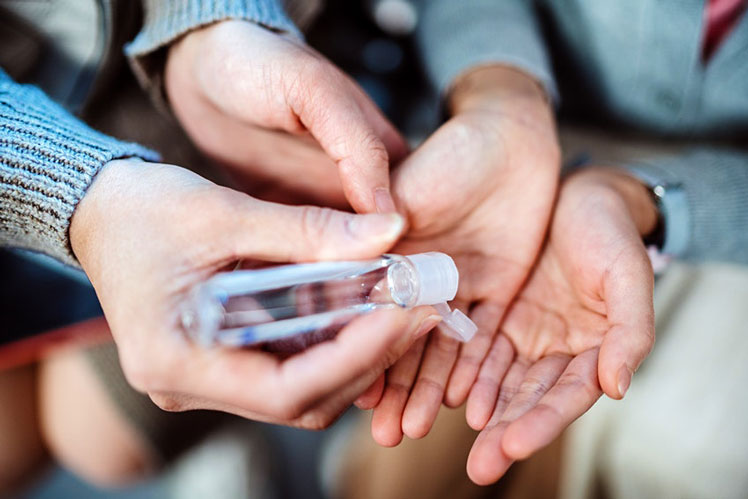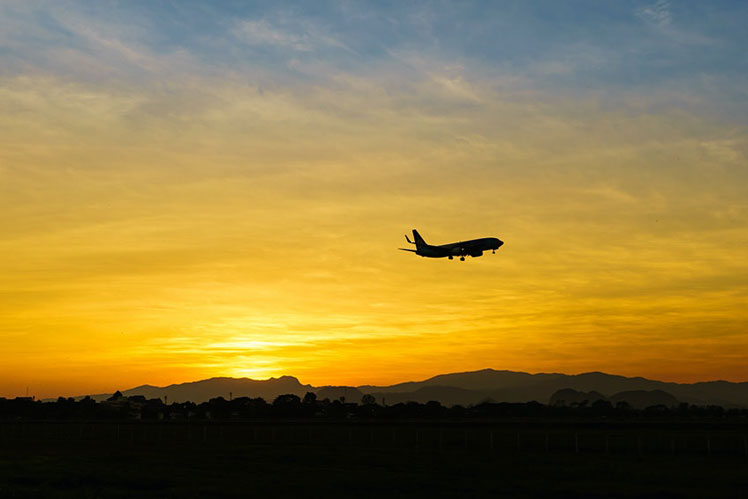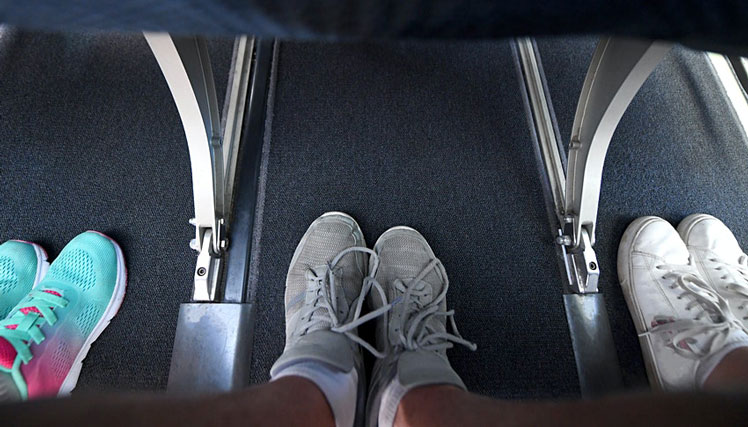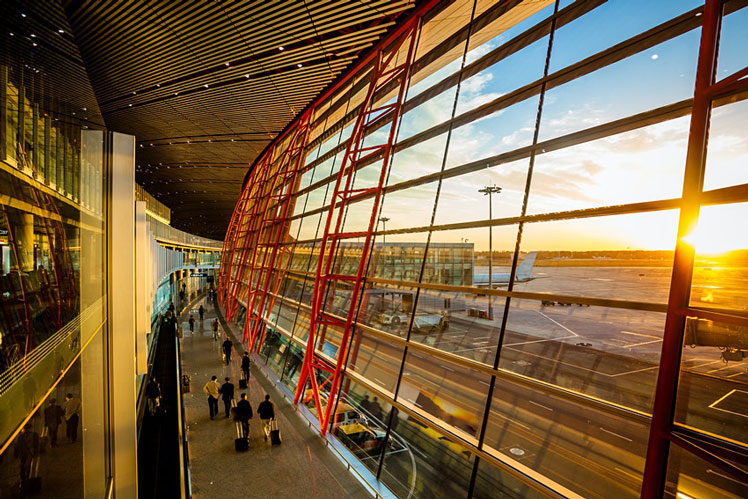
Are airlines doing enough to keep us safe from COVID-19?
TripFalcon October 05, 2020
Last Update: 2023-12-31 20:40:11Airlines across the world are taking a wide variety of measures to avoid exposing passengers and staff to the SARS-CoV-2 coronavirus that causes COVID-19. Aviation journalist John Walton dives into what’s going on — and whether it’s enough to keep us safe.
Travelling in the age of widespread circulation of the novel coronavirus that causes COVID-19 is fraught with uncertainty. Which airlines are blocking adjacent seats? How thorough is the cleaning of aircraft and airports? Will the airline ensure everyone wears a mask? Part of the uncertainty is that there is no global standard for airlines. ICAO (the UN body that regulates aviation on a global scale) has issued guidance but it’s pretty woolly.

It's important to take every precaution ©Images By Tang Ming Tung/Getty Images
Nor is there agreement between national or regional aviation regulators like the US FAA or Europe’s EASA (which has been working closely with other agencies including the European Centre for Disease Prevention and Control, the ECDC, with which it has issued joint guidance).
Living with this kind of uncertainty is just part of life in the COVID era. Part of the problem is that there’s no definition of what “safe” is when it comes to COVID-19, and that’s partly because it’s a relatively new disease we don’t know everything about yet. But the bottom line is that officials suggest travelling by air is likely to put you at a higher risk of catching COVID-19. As the US Centers for Disease Control and Prevention says, “travel increases your chance of getting and spreading COVID-19. Staying home is the best way to protect yourself and others from COVID-19.”
There is some good news, though. “Most viruses and other germs do not spread easily on flights because of how air circulates and is filtered on airplanes,” according to the CDC, but there’s some bad news too. “However, social distancing is difficult on crowded flights, and sitting within six feet of others, sometimes for hours, may increase your risk of getting COVID-19.”
Across the Atlantic, the European regulator EASA developed its Aviation Health Safety Protocol over the northern hemisphere summer with the ECDC. It considers everything from body temperature checks to the kind of face mask that should be used, protective screens, PCR COVID-19 tests, immunity certificates, physical distancing, what to do in the event of an ill passenger, and contact tracing. But it doesn’t require airlines to keep middle seats or adjacent seats free for people not flying in a family group, for example.

Planes haven't been associated with big outbreaks yet ©D-Stocker/Shutterstock
What are airlines doing?
Right now, airlines are relying on several main ways to keep people safer onboard: making masks mandatory, limiting interpersonal contact, using the HEPA filters installed on many aircraft, and boosting their aircraft cleaning programmes.
Let’s start with the cleaning. There aren’t many real national standards for COVID-19 safety, meaning that airlines are essentially just using their best judgement in creating cleaning procedures, some of which are being used as selling points for passengers. Some of these are even being branded by airlines, like the “Delta CareStandard” and “Air Canada CleanCare+”, and it all feels a little bit odd. Certain airlines, meanwhile, are partnering with household disinfectant brands, like the United CleanPlus partnership with Clorox, best known as a stand-in for its household bleach products in the same way that “Kleenex”, “Jacuzzi” or “Photoshop” are known in their areas.
(Working with Clorox has raised some eyebrows: household cleaners like bleach are, as a rule, not certified to be applied to aircraft seats, covers, and structures, and partnering with a household cleaner brand does rather suggest they might be safe to use. One of the important pieces of work that aviation has been doing this year has been to try to mitigate this problem — Finnair, for example, hands out an alcohol wipe to passengers — and to understand the effect of the products’ use.)
All of this, of course, requires more spending on aircraft cleaning and active management: if you’ve ever found a dirty airline tray or a suspicious stain on the floor, you’ll probably agree that “normal” cleaning isn’t exactly white-glove standard. And of course, with COVID-19 largely being spread in the air rather than on surfaces, it’s arguable that this isn’t the most effective investment in clean aircraft.
Moving on to limiting interpersonal contact, this is complicated. On the ground, it’s possible to put up transparent “sneeze-guard”-style screens to reduce the likelihood of transmission between you and the airline staffer at the check-in desk or the gate. The growth in self-service and automatic processing also helps here. That’s less true on the plane, not least because anything added to the cabin — sneeze guards, barriers and so on — needs to go through extensive emergency evacuation testing.

Not all planes are encouraging social distancing ©Scott's Shotz Photography/Shutterstock
And while some airlines’ inflight entertainment systems allow you to order a drink or snack from the seatback rather than raising your hand and calling the flight attendant, there’s clearly a risk from people travelling up and down the aisle, and indeed from sitting within six feet of people.
That’s the thing about the HEPA filter point as well: yes, aircraft air is usually either vented to the outside or scrubbed through a highly effective filter that airlines love calling “hospital operating room quality”. But if the person next to you happens to be an asymptomatic carrier of the coronavirus, that’s unlikely to help. (Keeping your distance from fellow passengers may help, not least because with distance comes a reduced amount of the virus circulating. That’s why some airlines started — and have continued — blocking adjacent or middle seats.)
What certainly does help according to all the science are masks, primarily because they trap the virus on their inner side so anyone who is a carrier spreads a lot less, but also because they can trap residual virus on the outside, reducing the amount that potentially enters your body. Some airlines are mandating the medical-style disposable masks, and indeed the EASA guidelines suggest these rather than homemade or fabric ones, which the regulator says “are not standardised and do not offer a consistent level of protection. For these reasons, non-medical face masks are not recommended for use where a minimal physical distance of 1.5 metres between individuals is not guaranteed.”
Airlines are taking a firm line on this, including requiring mask use, banning passengers who flout the rules — over seven hundred in the United States alone — and in one Japanese case even diverting a flight when a passenger reportedly became unruly after refusing to wear one.

Are the precautions enough? ©ssguy/Shutterstock
Is it enough?
Here’s the heart of the matter: are airlines doing enough? Well, without any definitive international standards in place, “enough” is hard to judge. It’s still a matter of working on scientific best estimation rather than hard, confirmed, peer-reviewed evidence, and in some details it’s entirely possible for two reasonable, scientifically-minded people to disagree in good faith, and for the scientific consensus to change even when it exists.
What is clear is that no one airline is getting everything right. Reports pass my desk daily of visibly uncleaned cabins, or airports whose capacity is unable to allow physical distancing in terminals, or cases where passengers are crammed from a sensibly managed flight into a cheek-by-jowl bus to the terminal. Airplanes haven’t been the source of too many clusters so far, it seems, but it’s a rare country where it would seem that the tracking-and-tracing system would be able to pinpoint situations that far.
At the end of the day, we still don’t know just how safe it is — or is not — to travel on an aircraft right now. We do know it’s a higher risk activity. But we also know that there are a number of relatively simple ways we can protect ourselves, our fellow passengers, and the airline staffers whose job it is to get us from point A to point B as safely as possible. Wear a mask. Keep your distance from people and surfaces wherever possible. Wash and disinfect your hands. And expect the unexpected.

